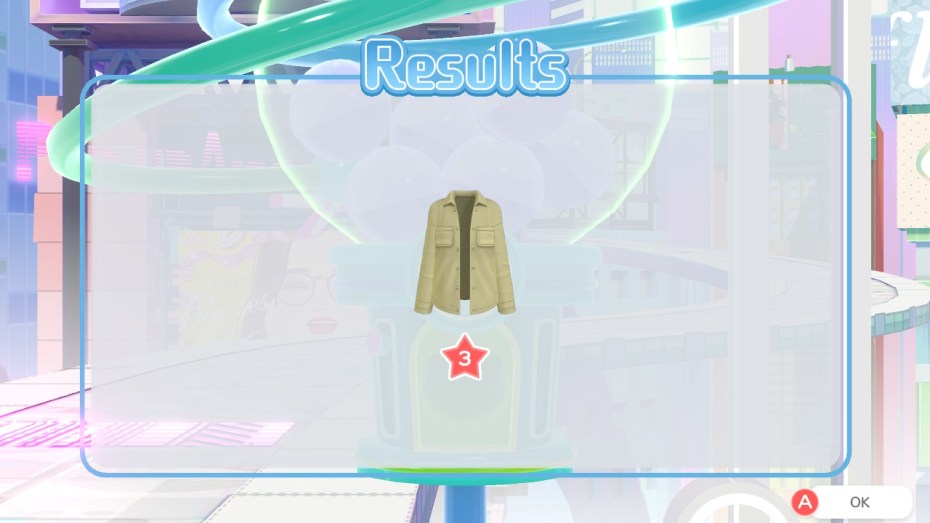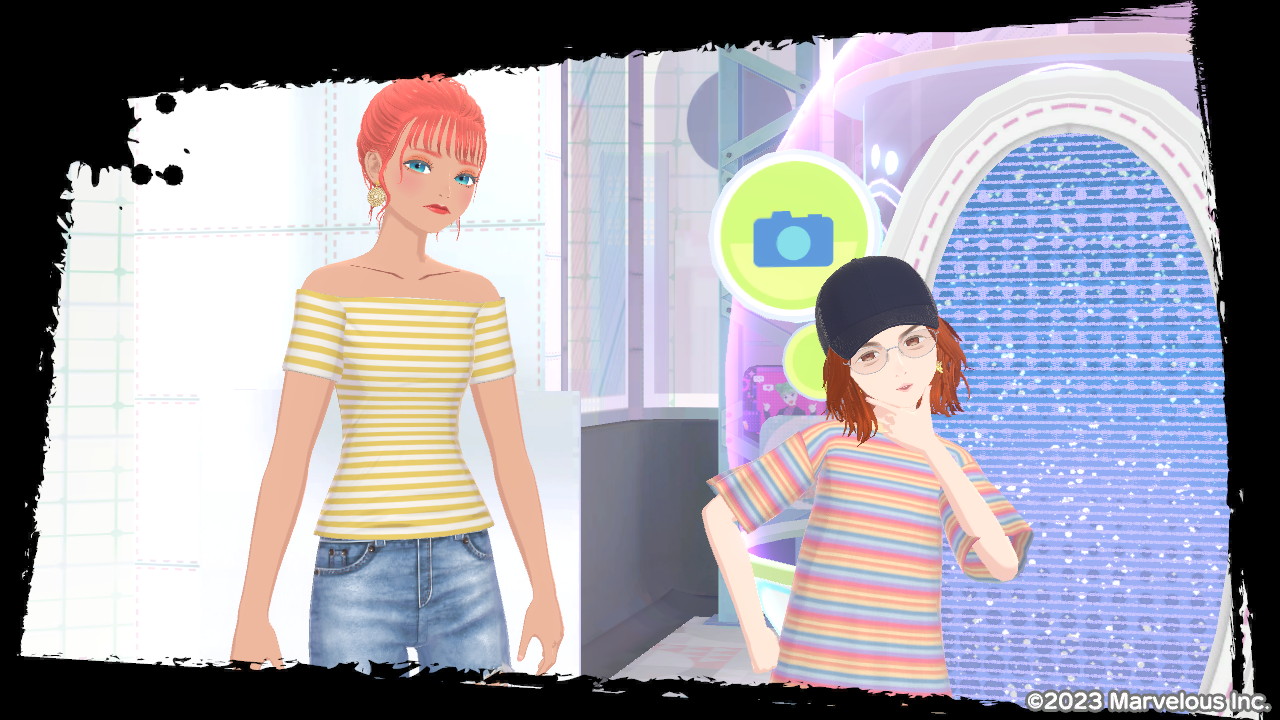Considering the success enjoyed by the Style Savvy (known as Fashion Boutique in Europe) titles on the Nintendo 3DS, developer Syn Sophia might have taken the concept of being fashionably late a little too far. Fashion Dreamer, a spiritual successor of sorts, has arrived on the Switch at a point where many consider the console to be on its last legs and are awaiting its successor with baited breath. The system has been noticeably lacking a fashion-centric title up to this point, with extensive customisation options often featuring in life sim titles such as Animal Crossing: New Horizons, but never being the focal point of the gameplay as they are here. Join us as we find out if Fashion Dreamer has the potential to be a trend-setter, or is a major faux pas.
Fashion Dreamer does not have a narrative or even a set of objectives for you to complete to progress, making it a more open and casual experience than its predecessors. The game’s setting is a world called Eve, a digital utopia for virtual avatars, known as Muses, to build their fashion brand in the hopes of becoming a top influencer. After a brief set of tutorial Quests that will last around an hour and introduce you to the game’s various systems, you are left to your own devices, free to explore the four Cocoons that make up the world of Eve and build a name for yourself the best you can. This is done by interacting with other Muses and designing outfits that cater to current trends, which are randomly generated and frequently change, encouraging experimentation with different styles.
Acquiring new items of clothing in Fashion Dreamer is as simple as walking up to an NPC and giving their outfit a Like, which will add all the items they’re wearing that you don’t already own to your inventory. You can pick individual pieces to Like if you’re not keen on the entire outfit, and also try it on for yourself. Muses may also request a new outfit, called a Lookit, with specific criteria when you interact with them. The requests can be as simple as asking that you use a specific piece of clothing, a colour, or create an outfit that matches a theme such as trendy or calm; or they can be a more complex combination of styles and items, requiring a little bit of creativity and thought. Doing this successfully will build affinity, and result in a reward such as another new item of clothing or a colour palette that you can use to customize your existing items. I found this to be a little repetitive after a while and saw the same items regularly, but it did allow me to acquire a lot of different items quickly and give me more options to experiment, as choices are very limited at the beginning of the game.






The amount of clothing on offer in Fashion Dreamer is extensive, caters to a broad variety of tastes, and allows for limitless combinations. Whatever your preference in clothing, there is a very good chance that the game has an outfit for you, or will allow you to create it yourself. There are nine different categories that add up to thousands of different items, although I felt that there was a lack of accessories, with bags being a notable omission, and the only type of jewelry available is earrings. But regardless, I felt that the range and variety here is impressive, and more than sufficient to create a unique character and look. On top of this, everything can be customized with colour palettes, or a more detailed colour wheel if you’re looking for a specific shade, further adding to the level of depth in crafting the look that you’re aiming for. Once you’re done, you can take a photo of your completed outfit and upload it onto the game’s equivalent of a social media feed (the Switch will also take a screenshot to save in the album on your system, something to keep in mind over the long term) to earn points that you can then spend on further customization.
But for all that it offers, Fashion Dreamer is not without its flaws. Several items of clothing can only be worn by a specific body type, which feels somewhat out-of-touch and counterproductive in a game that places such a heavy emphasis on player expression and creativity. The ability to create multiple Muses means that you’ll have the option to experiment with different items of clothing with another if they aren’t compatible with your first, but it is nonetheless disappointing that this restriction is present at all. Inventory management and navigation also becomes a bit of a minefield as you progress and unlock more clothing. You can filter your inventory by category when putting together a new outfit, and further sort items by criteria such as rarity, but I still found that as my inventory grew, it became more difficult to find and keep track of things. Some more comprehensive search options, such as the ability to search by colour or style, would have made the process of scrolling through hundreds of different items much easier.






Fashion Dreamer also has a showroom feature, which allows you to display your favourite outfits, and this space can be fully customized with furniture, wallpapers, and so on. Unfortunately, this is a very difficult feature to make the most of, with customization options being very limited at the start, new set pieces requiring an exorbitant amount of currency to purchase, and a very high Brand Level to even unlock. You’ll need to put several hours of play into the game to be able to do this, and it feels like a very artificial grind when compared to the simplicity of acquiring new outfits. The game also doesn’t allow you to create your own unique designs from a blank template, something that has been offered in other game series with fashion options such as Animal Crossing, and you are also unable to swap designs and patterns between items of clothing. Customization is restricted to swapping colours, which can feel extremely limiting despite the variety available. The cost of customization also feels excessive at times, which serves as an additional roadblock to allowing you full creative freedom, especially if you’re playing offline.
Fashion Dreamer was clearly designed with online play in mind. After completing the tutorial, you’ll be allowed to venture into the online space, and will see other player’s Muses appearing in the Cocoon spaces, who you can interact with in the same manner as NPCs. The rewards for fulfilling the Lookit requests of other players, and the rewards you’ll receive from their Likes, however, is significantly greater. This actually makes the method of acquiring clothing feel very well-designed, as players who give Likes are rewarded with new outfits and items of clothing to add to their inventory and try for themselves, and receive substantial boosts in currency they can spend on customization when one of their outfits is Liked by another player. I felt a tangible feeling of community and collaboration when playing online in Fashion Dreamer because of this system, and enjoyed seeing the designs that other players from across the globe had created. You can also ask for specific items of clothing when displaying outfits for the world to see, helping you to expand your inventory in a more specific way; meeting other player’s criteria will net you greater rewards.






Unfortunately, the downside to this is that it diminishes the offline experience. You’ll progress incredibly slowly without the boost you’ll get from other players’ involvement, and it makes online play feel practically mandatory in order to progress at any kind of measurable pace. With significantly smaller boosts for meeting the criteria for current trends, it becomes harder to gain currency to create new custom outfits, and with the only other methods of acquisition of new items of clothing being down to luck, it can feel incredibly tedious for longer play sessions if you’re playing alone.
Fashion Dreamer has the look and feel of many games that are set in virtual worlds, with each of Eve’s Cocoons being predominantly white, but with soft pastel colours and undertones that help prevent them from feeling sterile or particularly harsh on the eyes; the overall aesthetic is clean and often quite colourful. Character models have a unique charm to them and offer a suitable range of customisation options that make them look distinct, and I felt that clothing was sufficiently detailed to make customisation feel worthwhile, even if they lacked finer details that could have been included. The game runs smoothly on Switch with no noticeable framerate drops or excessive load times even when playing online, and I didn’t experience any crashes or sudden connection drops during my time with the game. Character animations can feel a little exaggerated and stiff at times, and your character’s movement speed can feel sluggish in those opening hours when you’re learning to navigate your way between areas, but the overall experience is a pleasant one.






Fashion Dreamer is a game that offers a wealth of customisation options that will keep you busy for hours on end, and the promise of future content updates from the developer make it a game worth keeping an eye on, even if you’re on the fence because of its missing items and features. If you have a creative itch to scratch and want to feel like part of a global community, then this is definitely a good option for you, as the gameplay loop complements online play perfectly. Fans of the Style Savvy/Fashion Boutique franchise looking for a spiritual successor may find that Fashion Dreamer doesn’t live up to their expectations however, as the lack of a narrative and extremely slow progression in solo play make this feel like a tedious grind that actively hampers your creative freedom with extremely high costs for customization. I enjoyed my time with the game for what it is, but your mileage may vary.
6/10
A copy of Fashion Dreamer for review purposes was provided by Nintendo UK.
Related
mynintendonews.com
